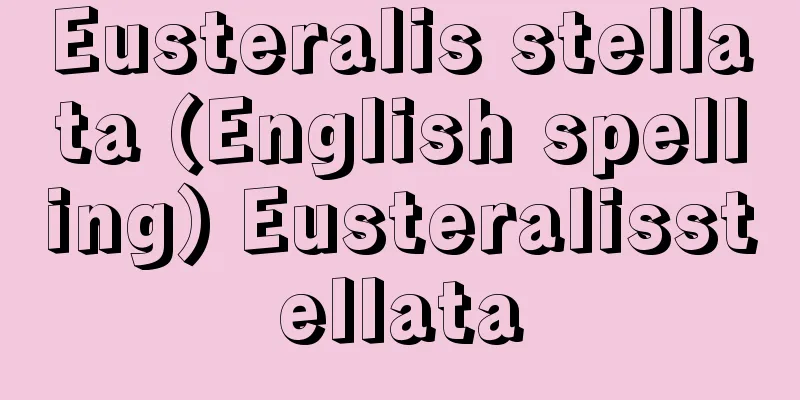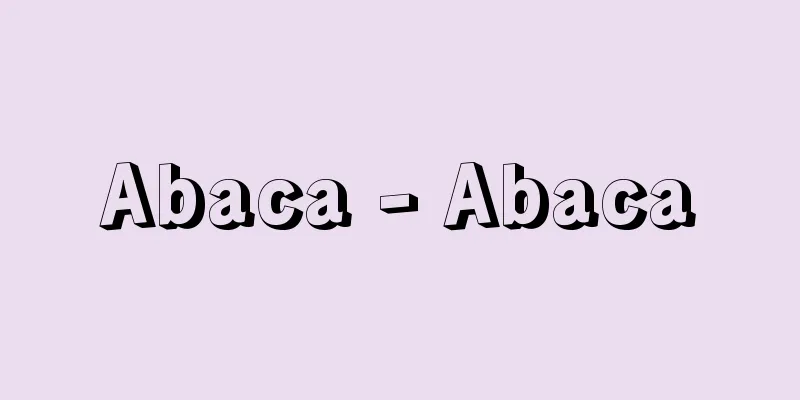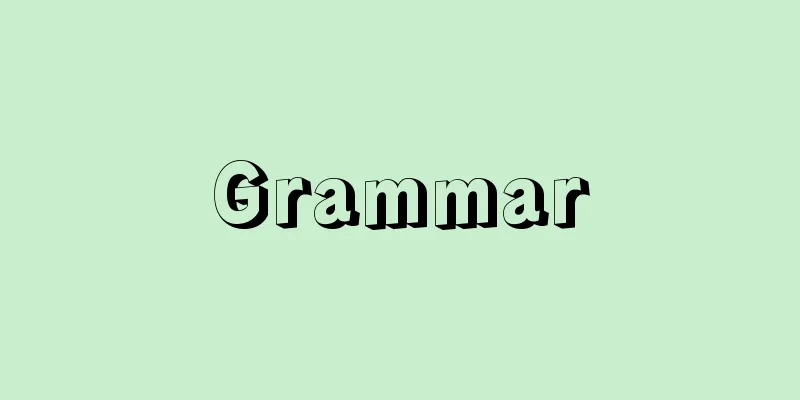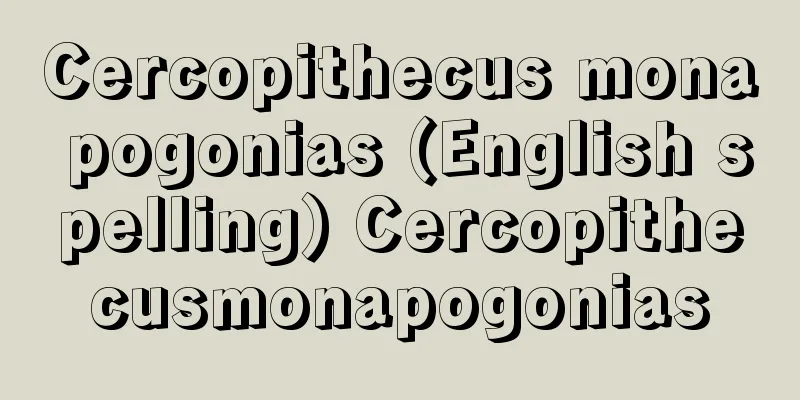Consumption tax - shohizei (English spelling) consumption tax

|
In a broad sense, it is a tax levied on the act of consumption, and is divided into direct consumption tax and indirect consumption tax. Direct consumption tax is a tax levied directly on consumers, while indirect consumption tax is a tax levied directly on economic entities other than consumers, but is ultimately borne by consumers through a pass-on process. Direct consumption taxes are further divided into individual consumption taxes and comprehensive consumption taxes. Individual consumption taxes are taxes levied on the consumption of individual goods and services. Comprehensive consumption taxes are taxes levied on the taxpayer's total annual consumption amount as the tax base. The only difference is that while income taxes are taxed on income, comprehensive consumption taxes are taxed on the amount of consumption after deducting savings from income. Like income taxes, they are per capita taxes, making it possible to levy taxes according to each taxpayer's tax-paying capacity. Indirect consumption taxes include domestic consumption taxes and customs duties. Domestic consumption taxes have long been used because they are often included as part of the price of goods and services and are therefore less resistant to taxpayers. They take the form of production taxes, distribution taxes, patent taxes, monopoly taxes, etc. [Masatoshi Hayashi] Japan Consumption TaxJapan's consumption tax was established at a rate of 3% in the tax reform implemented in fiscal year 1989 (Heisei 1). It is a tax levied in multiple stages on the sales of goods and services subject to consumption, and an input tax credit system has been established in order to eliminate tax accumulation, and the amount paid is the amount of consumption tax on purchases subtracted from the amount of consumption tax on sales. This is the same as a tax whose tax base is the value added calculated by subtracting the value of intermediate goods from sales, and in tax theory it is classified as a consumption-type value-added tax. The tax is collected in multiple stages, but it is assumed that the consumer will ultimately bear the burden through the forward shifting of the tax. The taxpayer is the business operator in domestic transactions and the importer in import transactions. The tax base is the consideration for the transfer of assets, etc., performed by the business operator and the collection price of foreign goods taken from the bonded area, respectively. Among the transfers of taxable assets made by businesses within a country, the transfer or lending of assets made as exports is exempt from tax; the tax of the exporting country disappears once the goods cross the border, and the goods are treated the same as domestic products in the importing country. The consumption tax was revised considerably on April 1, 1997. Previously, businesses with taxable sales (excluding tax) of 30 million yen or less in the base period (the year before last or the fiscal year before that) were exempt from tax liability, but the tax was revised so that new corporations with capital or investment of 10 million yen or more are not exempt from tax liability for the first two years of their establishment. The tax rate was raised from 3% to 4%, and a local consumption tax was newly introduced in 1997, but the tax rate is 25% of the consumption tax amount, which corresponds to a tax rate of 1% on the tax base of the consumption tax, and the tax rate for both taxes is 5%. Previously, the preservation of books or invoices was required as a requirement for the application of tax deductions related to the amount of purchases from the previous stage, but the preservation of books and invoices became mandatory, and the system was changed from the book system to the invoice system. As a special measure, there is a simplified taxation system, which allows taxpayers to choose the amount of consumption tax on their purchases based on the amount of consumption tax on their sales multiplied by the deemed purchase rate for the taxable period, but the upper limit of this system has been lowered from 400 million yen to 200 million yen. The deemed purchase rate is 90% for Type 1 businesses (wholesale), 80% for Type 2 businesses (retail), 70% for Type 3 businesses (manufacturing), 60% for Type 4 businesses (other businesses), and 50% for Type 5 businesses (services, etc.). In addition, there used to be a marginal deduction system, which allowed tax deductions for businesses with taxable sales of less than 50 million yen in the taxable period, thereby easing the burden on small taxpayers, but this system has been abolished. Consumption tax is a general tax, and in principle it is levied on the transfer of all assets, but there are some things that are not subject to taxation, such as the transfer and rental of land, due to the nature of the tax imposing a burden on consumption, and some asset transfers that are not taxed based on social policy considerations, such as medical care under the Medical Insurance Act. When the tax rate becomes high, there is a tendency for the number of items that are exempt from tax or subject to reduced tax rates based on social policy considerations to increase in order to mitigate the regressive nature of the burden, which is considered a disadvantage of this tax. [Masatoshi Hayashi] In August 2012, the Diet passed the Consumption Tax Increase Act ("Act to partially amend the Consumption Tax Act, etc. to carry out fundamental reform of the tax system to secure stable financial resources for social security, etc.", Act No. 68 of 2012) (which was subsequently amended in 2014, 2016, etc.). Based on this act, in order to secure financial resources for social security such as medical care and nursing care, it was decided to raise the consumption tax rate from 5% to 8% (including 1.7% local consumption tax rate) in April 2014, and to 10% (2.2% local consumption tax rate) in October 2019. At the same time as the increase to 10%, Japan's first reduced tax rate will be introduced. This applies to food and beverages (excluding alcohol and eating out) and newspapers (subscription newspapers published at least two days a week), and the consumption tax rate for both items will remain at 8%. As a result of this, consumption tax rates of 8% and 10% will be mixed, so a method of storing qualified invoices, etc., which will allow businesses to accurately determine the amount of tax they pay, will be introduced from October 2023 (from October 2019 to the end of September 2023, the method of storing classified invoices, etc., which identifies items subject to reduced tax rates with an * mark or other mark will be applied). The Consumption Tax Increase Law originally stated that the consumption tax rate would be raised to 10% in October 2015. However, the law contained an economic clause (which was removed in the 2014 amendment) that called for efforts to achieve an average economic growth rate of "approximately 3% nominal and 2% real" between fiscal years 2011 and 2020, and in November 2014, Prime Minister Abe Shinzo postponed the tax increase to April 2017 and dissolved the House of Representatives based on this clause. Furthermore, in June 2016, with the House of Councillors election approaching, Abe stated that "the global economy is facing major risks," and postponed the increase again to October 2019 (the decision was made in November 2016). As the consumption tax rate is increased, criticism of the "profit tax" is growing, whereby the consumption tax paid by consumers is not passed on to the national or local government, but remains in the hands of small and medium-sized businesses. In response to this criticism, the government has taken various measures to reduce the "profit tax". However, if the qualified invoice (invoice) preservation method is introduced, the simplified taxation method as a special measure will disappear, and in principle the profit tax will disappear. [Takeshi Yano April 16, 2019] [Reference items] | | | | |Source: Shogakukan Encyclopedia Nipponica About Encyclopedia Nipponica Information | Legend |
|
広義には消費という事実に対して課される税であり、直接消費税と間接消費税とに分けられる。直接消費税は消費者に直接課される税であり、間接消費税は直接的には消費者以外の経済主体に課税されるが、転嫁過程を通じて最終的には消費者により負担されると考えられる税である。 直接消費税は、さらに個別消費税と総合消費税とに分けられる。個別消費税とは個別の財やサービスの消費に対して課される税である。総合消費税とは納税者の1年間の消費総額を課税標準として課される税であり、所得税が所得を課税標準とするのに対して、総合消費税の場合には課税標準が所得から貯蓄を控除した消費額である点が異なるだけである。所得税と同じく人税であり、各納税者の担税力に合った課税が可能である。 間接消費税には、内国消費税と関税とがある。内国消費税は、財やサービスの価格の一部として税が含まれることが多いことから、納税者の抵抗が少なく、古くから利用されてきた。生産課税、流通課税、特許課税、専売課税などの形態をとる。 [林 正寿] 日本の消費税日本の消費税は、1989年度(平成1)に実施された税制改革において3%の税率で創設された。消費対象となる財・サービスの売上高に対して多段階で課税される税であり、税の累積を排除する観点から仕入税額控除制度が設けられており、売上げにかかわる消費税額から仕入れにかかわる消費税額を控除した金額を納付する。このことは、売上高から中間財の価値を控除して計算される付加価値を課税標準とする税と同じことであり、租税論で消費型の付加価値税として分類される。税の徴収は多段階において行われるが、税の前方への転嫁を通して最終的には消費者が負担するものと想定されている。納税義務者は国内取引においては事業者であり、輸入取引においては輸入者である。課税標準はそれぞれ事業者が行った資産の譲渡等の対価と、保税地域から引き取られる外国貨物の引取価額である。事業者が国内において行う課税資産の譲渡等のうち、輸出として行われる資産の譲渡または貸付は免税であり、国境を越えた時点で輸出国の税は消滅し、輸入国の国内製品と同様の扱いを受けることになる。 消費税は1997年(平成9)4月1日よりかなり大幅な改正をみた。従来は基準期間(前々年または前々事業年度)の課税売上高(税抜き)が3000万円以下の事業者は、納税義務が免除されたが、資本金または出資金が1000万円以上の新設法人の設立当初の2年間については、納税義務を免除しないように改正された。税率は従来の3%から4%に引き上げられ、さらに1997年度から地方消費税が新たに導入されたが、その税率は消費税額に対して25%であるから消費税の課税標準に対しては1%の税率に対応し、両税をあわせると5%の税率となる。前段階からの仕入額にかかわる税額控除の適用の要件として以前は帳簿または請求書等(インボイス)の保存が義務づけられていたが、帳簿および請求書等の保存が義務づけられるようになり、帳簿方式からインボイス方式へ移行した。 特例措置として簡易課税制度が存在し、課税期間について選択により、売上げにかかわる消費税額にみなし仕入率を乗じた金額を仕入れにかかわる消費税額とすることができるが、この制度の適用上限額が課税売上高4億円から2億円に引下げられた。みなし仕入れ率は第1種事業(卸売業)90%、第2種事業(小売業)80%、第3種事業(製造業)70%、第4種事業(その他の事業)60%、第5種事業(サービス業等)は50%となっている。また従来は限界控除制度が存在し、課税期間の課税売上高が5000万円未満の場合には税額を控除することにより、小規模納税者の負担緩和が図られていたが、この制度は廃止された。 消費税は一般税であり、基本的にはすべての資産の譲渡等に課税されるのが原則であるが、土地の譲渡および貸付のように消費に負担を求める税としての性質上課税対象とならないものや、医療保険法上の医療のように社会政策的配慮に基づいて課税されない非課税扱いの資産譲渡も存在する。税率が高くなると、この税の短所とされる負担の逆進性を緩和するために、社会政策的配慮に基づいた非課税や軽減税率適用対象が増加する傾向がある。 [林 正寿] 2012年(平成24)8月、国会で消費増税法(「社会保障の安定財源の確保等を図る税制の抜本的な改革を行うための消費税法等の一部を改正する等の法律」、平成24年法律第68号)が成立した(その後2014年、2016年など相次ぎ改正)。同法に基づき、医療、介護などの社会保障財源を確保するため、消費税率を2014年4月に5%から8%(うち地方消費税率1.7%)へ、2019年10月に10%(同2.2%)へ引き上げることが決まった。10%への引上げと同時に日本初の軽減税率が導入される。対象は飲食料品(酒類・外食を除く)と新聞(週2日以上発行の定期購読新聞)で、両品目の消費税率は8%に据え置かれる。これにより8%と10%の消費税率が混在するため、事業者の納税額を正確に把握する適格請求書(インボイス)等保存方式が2023年10月から導入される(2019年10月から2023年9月末までは、軽減税率適用品目を※印などで識別する区分記載請求書等保存方式を適用)。 消費増税法は当初、2015年10月に消費税率を10%に引き上げると明記していた。しかし消費増税法には景気条項(2014年改正で削除)があり、2011~2020年度平均で「名目3%程度、実質2%程度」という経済成長率を目ざす取組みを求めており、2014年11月に首相の安倍晋三(あべしんぞう)はこの条項に基づき、引上げ時期を2017年4月に延期し、衆議院を解散した。さらに参議院選挙を控えた2016年6月に、安倍は「世界経済は大きなリスクに直面している」として、引上げ時期を2019年10月に再延期(決定は2016年11月)した。 消費税率の引上げに伴い、消費者が払った消費税が国や地方公共団体に納められず、中小事業者の手元に残る「益税」への批判が強まっている。この批判にこたえるため、政府は「益税」縮小策を種々講じてきた。しかし適格請求書(インボイス)等保存方式が導入されれば、特例措置としての簡易課税方式はなくなり、原則として益税はなくなる。 [矢野 武 2019年4月16日] [参照項目] | | | | | |出典 小学館 日本大百科全書(ニッポニカ)日本大百科全書(ニッポニカ)について 情報 | 凡例 |
Recommend
Rock-forming minerals
A mineral that is the main component of various r...
Alisov, BP (English spelling)
...From the perspective of modern climatology, H....
Ziyad (English spelling)
... In the Islamic era, as the political center o...
Six Days of the New Year - Muika and Toshikoshi
One of the New Year's events held on the 6th o...
White Robed Kannon - Byakue Kannon
(Translation of Pāṇḍuravāsinī) Buddhist term. In...
Tabinshwehti (English spelling)
1516‐50 The de facto founder of the Taungoo dynast...
Nahari [town] - Nahari
A town in Aki District, eastern Kochi Prefecture, ...
socialisme autogestionnaire (English) socialisme autogestionnaire
…Official name: French RepublicRépublique françai...
Imam (Imam) - Imam
The word Imam is used in the Quran to mean "...
Matteo Renato Imbriani
1843‐1901 Italian politician. His father was a pol...
Iyobushi
A popular song from the end of the Edo period. Du...
Plumbago indica (English name) Plumbagoindica
…[Kazuo Furusato]. … *Some of the terminology tha...
Tool - Kako
〘Noun〙① A hook used to fasten leather belts, etc. ...
Kanto Travelogue
This is a record written by Shokai, a disciple of...
Grey phalarope
...In winter plumage, the upper side is gray and ...









